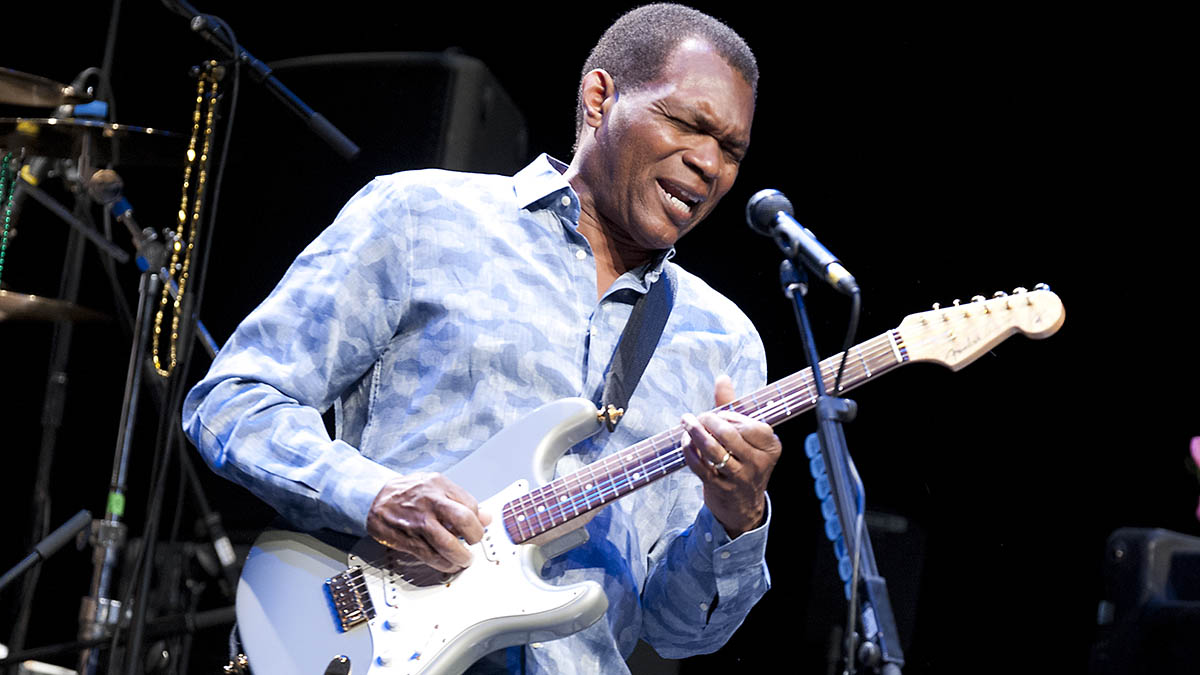Learn to play the blues like Strat master Robert Cray
Solo in major and minor keys with this lesson in the style of one of blues guitar's most legendary players

Five-time Grammy award winner Robert Cray is one of the longest-standing bluesman in the current scene. Still touring with his band, Cray has been active for almost 50 years.
Born in the early 1950s in Columbus, Georgia, Cray’s musical journey began in his high school years, playing in bands and inspired by the famous bluesmen of the day. These included many of the usual suspects including Albert Collins, Muddy Waters, John Lee Hooker, and Freddie King.
After playing in high school bands, it was in his early 20s that Robert decided to form The Robert Cray Band and pursue his career in music. This was directly due to seeing his heroes Freddie King and Muddy Waters in concert.
In 1980 Cray released his debut album on Tomato records. The album, Who’s Been Talkin’ showcases some robust classic blues tunes with some beautifully played guitar work. Unlike many of his heroes who sported Gibson guitars, Cray has always favoured the Fender Stratocaster, and the album features some of the best classic Strat blues tones you will hear.
As well as being a striking guitarist with a familiar yet personal sound, he is also a strong singer and great storyteller. This element has been an integral part of his career with his strong songwriting capability earning him a plethora of Grammy awards, and Gold or even Platinum albums.
As his success grew, other big stars started to notice his talent and it wasn’t long before he was picked by the likes of Keith Richards and Tina Turner. Richards put Cray in the backing band for Chuck Berry in the 1987 film, Chuck Berry: Hail! Hail! Rock ’N’ Roll, and Tina asked Robert to be part of her Break Every Rule TV special.
By the late '80s, Cray was becoming a household name, selling out his own tours and appearing as the opener for megastars like Eric Clapton. Not only this, but Cray also had the opportunity to work with one of his heroes, John Lee Hooker. Hooker got Cray to provide a guest solo on his song, Same old Blues Again.
Hooker also got him to play on his album, The Healer, on which he supplied the solo to Baby Lee. This led to more opportunities with BB King inviting him to play on his 1993 album, Blues Summit. They also performed a duet on the album, Playin’ With My Friends.
On later albums, Robert dabbled in more contemporary sounds such as funk, pop and gospel, but his iconic guitar tone resounds throughout. In these studies we focus on Cray’s phrasing in both minor and major blues contexts. He rarely plays fast, but every note he picks comes from absolute conviction. Now aim to do the same!
Get the tone
Amp settings: Gain 4, Bass 7, Middle 5, Treble 7, Reverb 5
Robert’s use of Fender Strats is legendary. His amps of choice have been Fender or Matchless, run very loud so that they are almost breaking up. Try a neck single-coil with a full, fat clean tone.
To emulate his sound without the sheer volume, a compressor pedal will help emulate the sustain of a loud guitar amp at more manageable levels. Add light to medium reverb.
Study 1. Minor ballad
This study focuses on Cray’s wonderful ability to develop soulful melodies in the minor blues context. Make note of the rhythmical variations employed around the same groupings of notes to help bring colour and contrast to his ideas. Above all, aim to make every note count.
Study 2. Major Gospel-blues
This study is an example of Cray’s phrasing in a major gospel-blues context. Notice how he switches between drawing on the straight major scale tonality, and occasionally throwing in the b7 and b3 to provide a Dominant edge. These two intervals add more bluesiness to the otherwise happy major scale sound.
Get The Pick Newsletter
All the latest guitar news, interviews, lessons, reviews, deals and more, direct to your inbox!
Phil Short is a sought-after guitarist from the UK. A stadium player, Phil is well known for his technically accomplished guitar style and has showcased his talent touring with Irish boyband Westlife. As well as touring, Phil has been a visiting lecturer at BIMM London since 2017, teaching performance, technique and improvisational skills to the next generation of guitarists. Phil is a monthly contributor for Guitar Techniques magazine, writing the blues column as well as video features on iconic rock legends.
“There are so many sounds to be discovered when you get away from using a pick”: Jared James Nichols shows you how to add “snap, crackle and pop” to your playing with banjo rolls and string snaps
Don't let chord inversions bamboozle you. It's simply the case of shuffling the notes around








![Joe Bonamassa [left] wears a deep blue suit and polka-dotted shirt and plays his green refin Strat; the late Irish blues legend Rory Gallagher [right] screams and inflicts some punishment on his heavily worn number one Stratocaster.](https://cdn.mos.cms.futurecdn.net/cw28h7UBcTVfTLs7p7eiLe.jpg)


